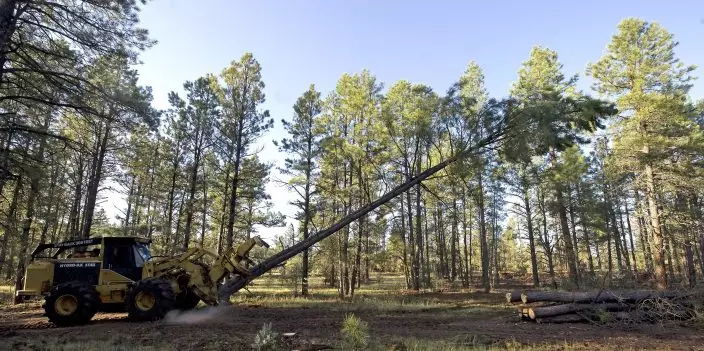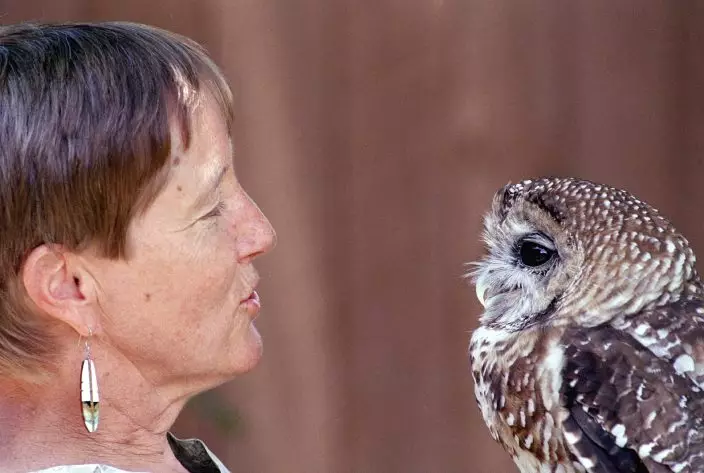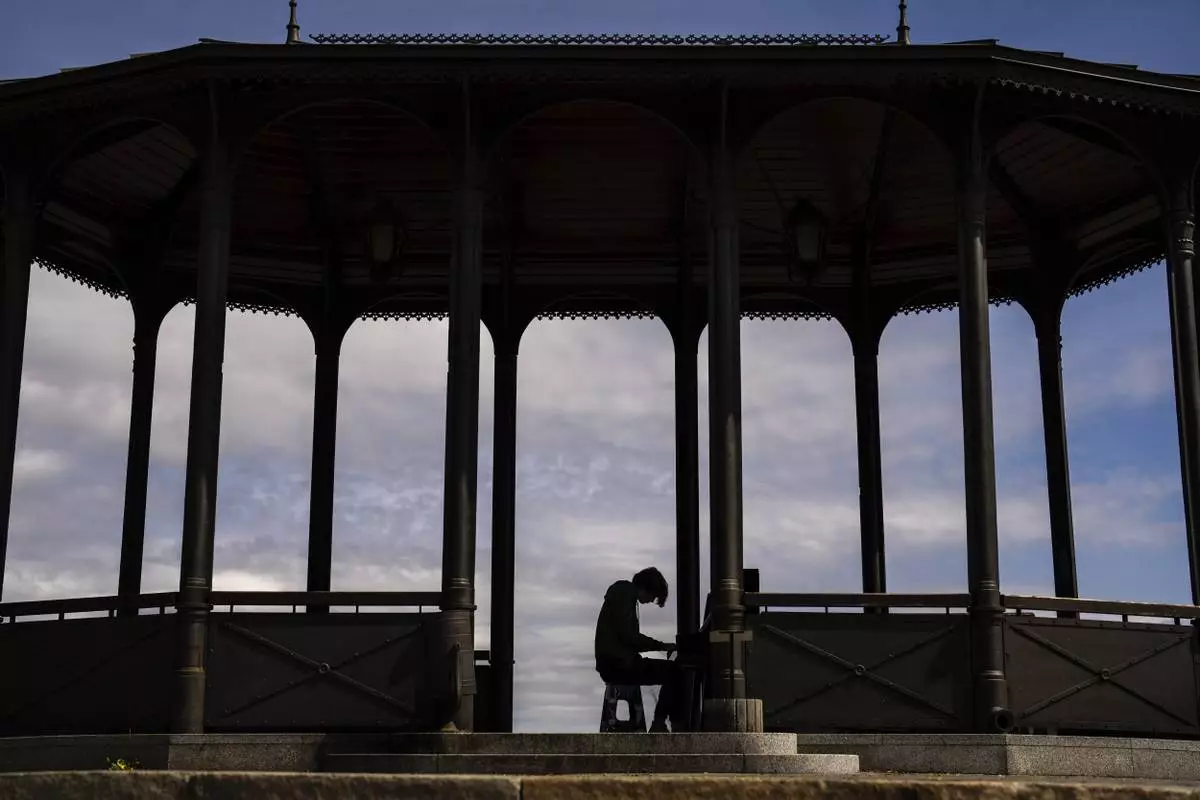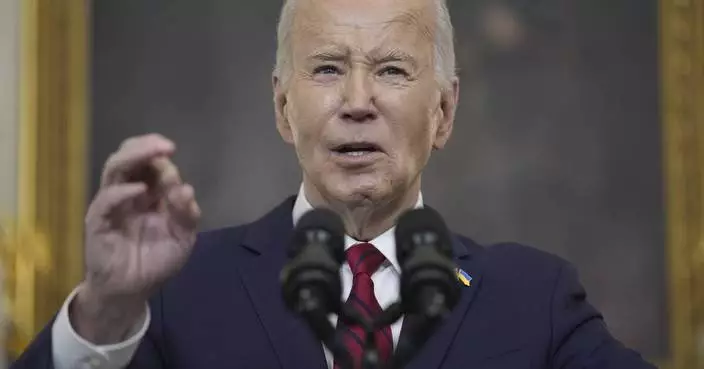The scope of a tree-cutting ban across several national forests in the Southwest has been further narrowed to allow for Christmas tree permits and prescribed burns under a new order issued by a U.S. judge in an ongoing fight over a threatened owl.
The order was filed late Tuesday, a day after environmentalists and the U.S. Forest Service reached an agreement on what types of activities would be allowed to continue across thousands of square miles of forest in New Mexico and Arizona without harming the Mexican spotted owl or its habitat.
The activities permitted by the latest court order include the cutting of a tree in northern New Mexico that will be put on display for Christmas outside the U.S. Capitol.

FILE - In this Aug. 25, 2009, file photo, logging equipment cuts down a tree near Reserve, N.M. A federal judge has halted tree-cutting activities on all five national forests in New Mexico and one in Arizona until federal agencies can get a better handle on how to monitor the population of the threatened Mexican spotted owl. The order issued earlier Sept. 2019, out of the U.S. District Court in Tucson covers 18,750 square miles. The cutting of Christmas trees across several national forests in the Southwest will be allowed under an order issued by a U.S. district judge in the fight over a threatened owl. That includes a tree from the Carson National Forest that will be felled and displayed outside the U.S. Capitol. (AP PhotoChris Carlson, File)
Legal wrangling had threatened to stall the cutting of the tree and a statewide tour ahead of its trip to Washington, D.C.
The gathering of firewood by rural residents also was at issue as the Forest Service interpreted Judge Raner Collins' initial order to mean all timber management activities across five New Mexico forests and one in Arizona would be halted until forest and wildlife managers came up with a way to count the owls as part of a recovery plan.
Environmentalists argued that the Forest Service's interpretation was overly broad and asked the judge for clarification. They ended up reaching an agreement with federal officials, resulting in stipulations Collins included in his latest order.

FILE - In this July 11, 2002, file photo, Dr. Kathleen Ramsay gets the attention of "Manchado," a Mexican Spotted Owl at the Wildlife Center near Espanola, N.M. The cutting of Christmas trees across several national forests in the Southwest will be allowed under an order issued by a U.S. district judge in the fight over a threatened owl. That includes a tree from the Carson National Forest that will be felled and displayed outside the U.S. Capitol. The tree-cutting along with prescribed burns and other projects were put on hold following an earlier ruling in a case that alleged the U.S. Forest Service failed to consider the effects of thinning and logging on the Mexican spotted owl. (AP PhotoNeil Jacobs, File)
"None of these activities that we agreed to release from the injunction, whether cutting the Capitol Christmas tree or conducting trail maintenance, were ever a serious threat to the owl," said John Horning, executive director of WildEarth Guardians. "We hope the Forest Service reorients to the work of recovering the owl by adequately monitoring its population."
Still pending is a request by the Forest Service for the judge to reconsider his initial ruling that found federal officials fell short of their responsibility to monitor the owl. Arguments are set for Nov. 7.
The case started in 2013, when environmentalists alleged that the Forest Service failed to consider the effects of thinning and logging on Mexican spotted owls.
First listed as threatened in the U.S. in 1993, the Mexican spotted owl is found in Arizona, New Mexico, Colorado, Utah, parts of West Texas and Mexico.
The Forest Service has argued that moving ahead with prescribed burns and thinning projects will address wildfire threats and ultimately make for a healthier environment. The agency said in a statement Wednesday it would be transparent in the steps it takes to alleviate "stressors" that have resulted from the initial limits on timber management activities.
Projects within owl habitat still are off-limits, but the order made public Wednesday allows for commercial firewood gathering outside of protected zones to continue. Prescribed burns also can resume with some stipulations.
The order also permits the cutting of vigas and latillas — wooden beams and posts — for personal use along with the collection of forest products for tribal ceremonial purposes.










